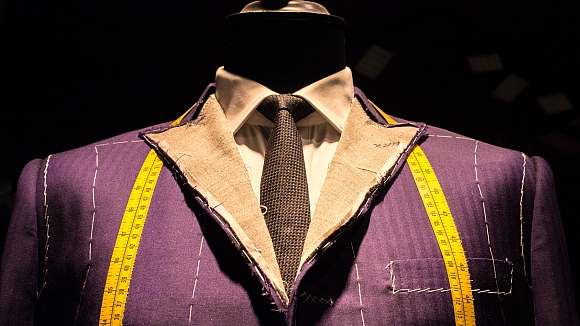
Global luxury goods market – high-end brands remain on record course. Despite economic uncertainties, the global market for personal luxury goods continues to grow significantly, reaching $345 billion in 2022. By the end of the decade, sales could more than double compared to 2020. After the lifting of the Corona restrictions, the tourism business in Europe in particular is contributing to the positive development of the high-end sector Luxury sector should face the growing sustainability requirements and rely on new technologies.
Sales of high-end clothing, shoes, leather goods, perfume and jewellery rise by up to 11 percent
The luxury goods industry has recently been in brilliant shape. After peaking at €345 billion in 2022 – up around 19 per cent from €290 billion in 2021 – the global personal luxury goods market continues to grow solidly. In the first three months of 2023, sales of high-end clothing, footwear, leather goods, perfume and jewellery by high-end brands are expected to have increased by up to 11 per cent compared to the same quarter last year, despite all the economic risks and geopolitical instability. For the full year 2023, the increase is expected to be between 5 and 12 percent, depending on the economic development. This is the conclusion reached by the international management consultancy Bain & Company and the Italian luxury goods association Fondazione Altagamma in the current spring update of their “Luxury Goods Worldwide Market Study”.
Global Luxury Goods Market – International Tourism Drives Dynamics in Europe
The signs for the coming years also point to growth. According to the study, the global market volume could rise to as much as 570 billion euros by 2030, which would be far more than double the 220 billion euros of 2020. “The luxury goods industry is entering a new post-pandemic growth phase in which adaptability and resilience will be crucial,” explains Bain partner and industry expert Marie-Therese Marek. “Successful brands focus holistically on their customers, manage their regional orientation and offer a high-quality range with corresponding clienteling and experience character. They also target select iconic and timeless products.”
Slowdown in momentum within the realm of possibility
However, the outlook for the industry varies from region to region. Europe has seen a strong first quarter of 2023, largely due to the continued spending spree of the particularly affluent. And the fact that international tourism has returned following the global end of Corona restrictions has further boosted the luxury business. “Nevertheless, Europe may soon experience a ‘moment of truth’,” Marek warns. “The number of travellers from the US and the Middle East could decline in the coming months, so a slowdown in momentum is within the realm of possibility.” On the other hand, more tourists from China and the Far East are arriving again.
Global luxury goods market – China shows recovery, the USA weakens
The opening of China after the end of the pandemic had already triggered a boom there for the 2023 New Year. This year, a number of brands will reach their 2021 sales levels in China’s domestic market. Luxury labels in Macau and Hong Kong, however, will benefit even more from the Chinese clientele’s eagerness to travel and spend.
The willingness of the US population to buy is dampened. This is not only due to economic uncertainty, but also to the expiry of the government’s Corona support measures. Although US Americans have savings totalling around 900 billion euros, they are holding back on shopping. If money is spent on high-quality brand-name goods, it is either on trips or on special occasions. Nevertheless, there are changes on the US luxury map. New York and California are returning to strength, i.e. are shopping hotspots again, and holiday destinations such as Hawaii and Las Vegas are gradually recovering, but are still below their 2019 peaks.
Top customer segment is particularly demanding – 2 percent of all luxury customers account for around 40 percent of sales
The current study also shows a “striving for higher” across all categories, driven by iconic and ultra-luxury products, industry expert Marek states. “Customers are now specifically opting for fewer but, in their eyes, all the more exclusive purchases.”
This development is mainly due to the top customer segment, which also includes many particularly wealthy people. In 2022, this segment was estimated to account for about 2 percent of all luxury customers and a total of about 40 percent of sales. This concentration has even increased slightly in recent years.
Sustainability and AI demand a rethink – also for luxury brands
Despite all the growth prospects, luxury manufacturers cannot rest on their traditional strengths such as individuality or exclusivity. They, too, are challenged to increasingly deal with sustainability or ESG criteria (Environmental, Social, Governance) and to take them into account. For example, the EU wants to ensure more circular economy in the clothing industry through stricter regulations. “Decoupling expected business growth from emissions growth must be a priority for every luxury brand in the next three years and is also one of the biggest challenges,” emphasises Bain partner Marek.
Exploiting advantages and efficiency potential.
Luxury manufacturers could benefit from the rapid progress in the field of generative artificial intelligence (AI). Application examples range from the development of new product designs to the design of advertising campaigns and sales support. “If you want to be among the winners of the future, you have to start pilot projects in the field of AI now,” Marek states. “Only in this way will companies succeed in exploiting the associated advantages and efficiency potential. And only in this way is it possible to secure a competitive edge.”
Click here to go directly to the summary of the results of the study on the website of the management consultancy Bain & Company: https://www.bain.com/insights/from-surging-recovery-to-elegant-advance-the-evolving-future-of-luxury/
[Translation: epcnews/Photo: fotolia]
